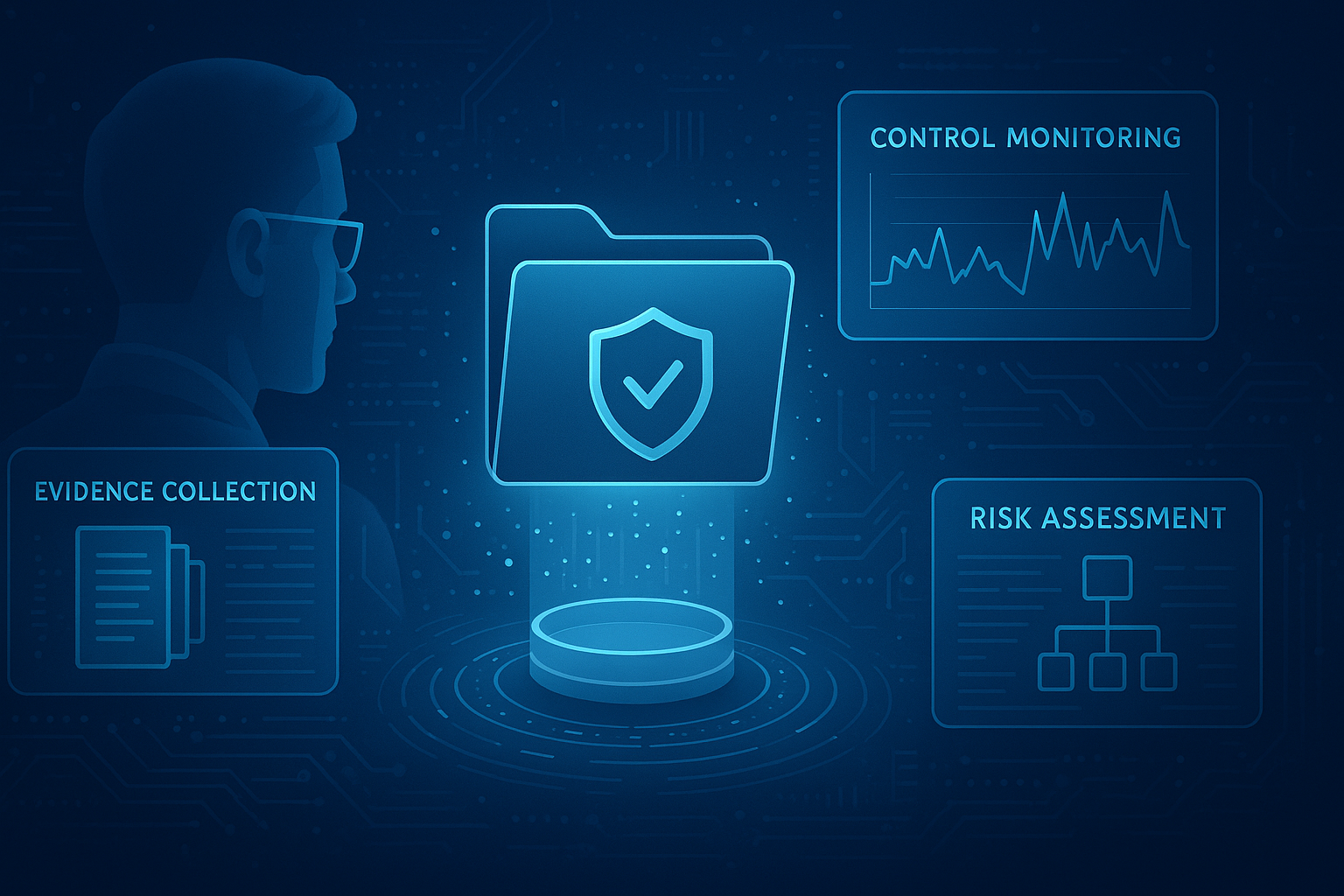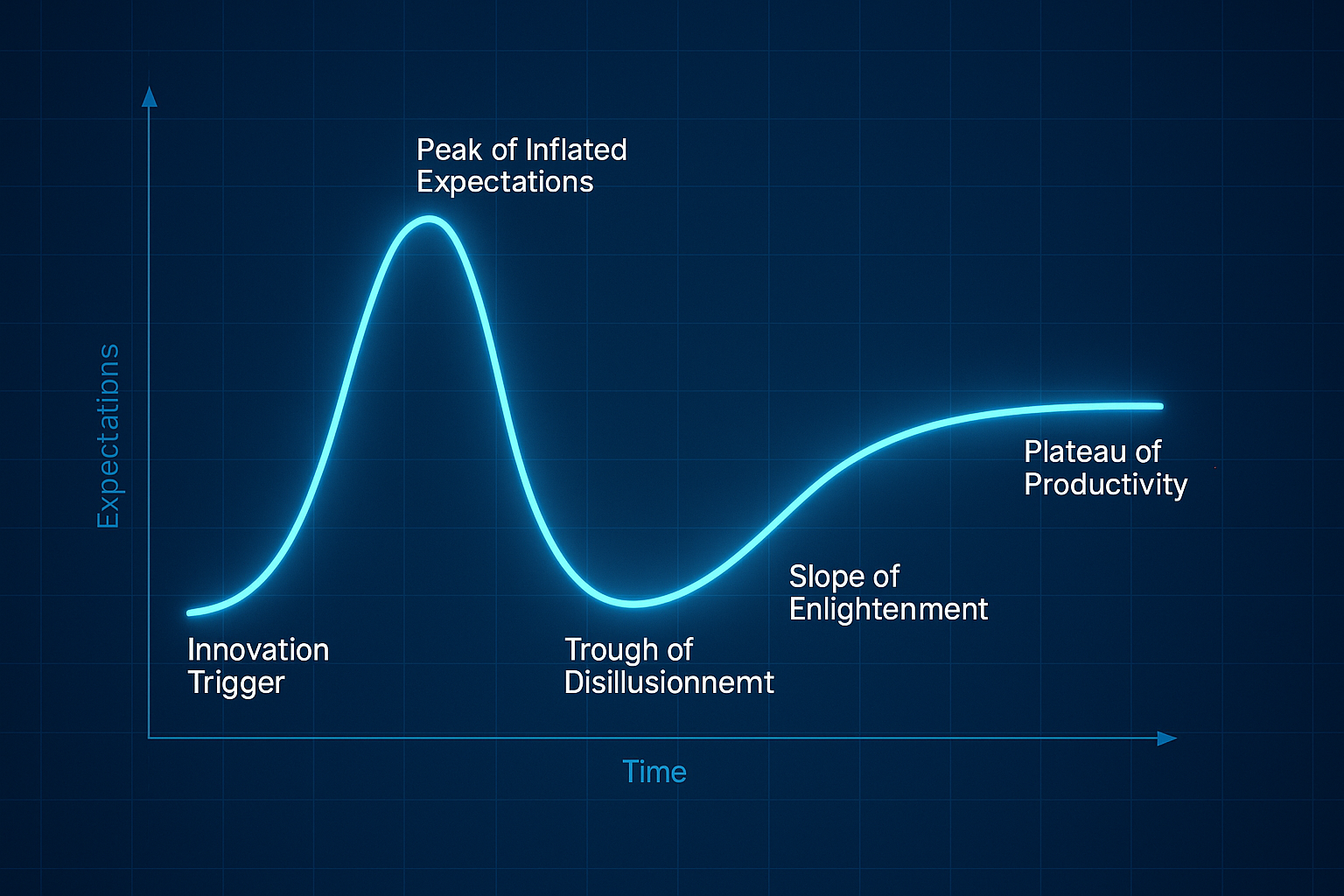Third-party risk management (TPRM) is no longer a periodic compliance exercise; it’s a strategic imperative. As organizations expand their digital ecosystems, managing third-party risk becomes more complex and critical. Siloed point solutions, manual processes, and fragmented oversight lead to blind spots that expose organizations to regulatory gaps and cybersecurity threats.
This guide explores a modern, six-stage Third-Party Risk Management Lifecycle and how unified, intelligent platforms like CyberStrong transform legacy workflows into dynamic, automated risk programs that align with business objectives.
Key Takeaways of the Third-Party Risk Management Lifecycle:
- The TPRM Lifecycle includes six integrated stages that require ongoing orchestration.
- Point solutions and manual workflows limit visibility and scalability.
- Automation reduces assessment time and improves control accuracy.
- Unified platforms enable real-time risk quantification and vendor performance tracking.
- AI-driven tools shift TPRM from reactive compliance to proactive, continuous oversight.
What Is the Third-Party Risk Management Lifecycle?
The TPRM Lifecycle is a comprehensive, end-to-end process for managing risk across the vendor relationship, from selection through offboarding. It requires more than static assessments; effective TPRM involves continuous data integration, real-time visibility, and actionable risk intelligence to manage today’s evolving threat landscape.
According to Gartner’s 2025 Market Guide for TPRM Technology Solutions, organizations with mature TPRM lifecycles experience fewer security incidents, improved audit outcomes, and better alignment with business and regulatory demands.
Stage 1: Vendor Selection
Objective: Identify potential vendors that align with business needs and risk appetite.
Activities:
- Define service requirements and evaluate vendor alignment with strategic and operational goals.
- Conduct preliminary screenings for security posture, compliance certifications, and criticality.
- Initiate third-party discovery using tools that detect shadow IT and unmanaged vendor relationships.
Challenges:
Without centralized selection criteria and inventory tracking, critical risk indicators are missed early in the vendor lifecycle.
CyberStrong Advantage: CyberStrong automatically builds and maintains your vendor inventory through integrations with procurement, IT asset management, and network systems. AI-enhanced discovery tools surface shadow IT, enabling more informed vendor evaluations from the start.
Stage 2: Due Diligence & Intake
Objective: Gather and validate vendor information to establish a comprehensive risk profile.
Activities:
- Distribute intake questionnaires and collect documentation (e.g., SOC 2, ISO 27001).
- Automate data extraction and control mapping across cybersecurity frameworks and standards.
- Establish initial risk classifications based on inherent risk factors.
Challenges:
Manual intake processes are inconsistent and time-consuming, often missing critical control data, which results in delayed onboarding.
CyberStrong Advantage: CyberStrong utilizes NLP for crosswalking to automate alignment across multiple frameworks, eliminating manual mapping errors and accelerating intake.
Stage 3: Vendor Risk Assessment
Objective: Evaluate vendor risk posture and identify control gaps.
Activities:
- Perform control evaluations based on uploaded artifacts and continuous telemetry.
- Integrate threat intelligence and vulnerability data to assess exposure.
- Conduct qualitative and quantitative risk analyses (e.g., NIST 800-30 risk methodology or the FAIR risk model).
Challenges:
Static assessments fail to account for real-time threats, and inconsistent evaluation methods produce unreliable results.
CyberStrong Advantage: CyberStrong continuously ingests threat intelligence and security telemetry for up-to-date assessments. Built-in Cyber Risk Quantification models translate technical findings into business-impact metrics, helping teams prioritize effectively.
Stage 4: Risk Scoring
Objective: Prioritize risk across vendors using dynamic, contextual scoring models.
Activities:
- Apply multi-factor scoring that reflects likelihood, impact, and business criticality.
- Dynamically adjust scores based on new data or changes in vendor posture
- Align scores with organizational risk tolerance and reporting requirements.
Challenges:
Many organizations rely on spreadsheet-based scoring that’s static, subjective, and difficult to scale.
CyberStrong Advantage: CyberStrong’s scoring engine recalculates vendor risk in real time, reflecting updated control performance and threat data. Contextual weighting ensures scores align with your risk strategy, while dashboards make scores instantly visible across teams.
Stage 5: Remediation Planning & Monitoring
Objective: Resolve identified risks and continuously track vendor performance.
Activities:
- Develop and assign remediation plans that include a cost-benefit analysis.
- Monitor the progress of risk mitigation and vendor responsiveness to ensure timely and effective resolution.
- Enable real-time alerts and stakeholder escalation workflow.s
Challenges:
Without workflow automation, organizations struggle to track issues, coordinate across departments, and ensure timely remediation.
CyberStrong Advantage: CyberStrong automates remediation workflows, integrates with ticketing tools, and enables real-time alerts. Risk managers can assign tasks, track deadlines, and provide leadership with up-to-date remediation status, all within a single integrative system.
Stage 6: Termination & Offboarding
Objective: Ensure secure disengagement and minimize residual risk following the end of a vendor relationship.
Activities:
- Terminate access credentials and remove vendor data access.
- Review contract terms and ensure final deliverables and documentation are met
- Archive risk assessments and audit logs for regulatory purposes
Challenges:
Offboarding is often overlooked, leaving systems exposed and compliance documentation incomplete.
4 Reasons Why Legacy GRC Solutions Fall Short for TPRM
Disconnected tools create critical challenges:
- Siloed Data: Inconsistent inputs across risk, compliance, and procurement functions
- Manual Rework: Time-intensive tasks increase error and limit scale
- Limited Visibility: Blind spots across vendors, fourth parties, and frameworks
- Compliance Gaps: Inefficient, duplicated efforts to prove alignment
CyberStrong’s Unified TPRM Platform: CyberStrong consolidates risk, compliance, and performance intelligence across your vendor ecosystem. Automated crosswalking, dynamic scoring, and real-time monitoring close visibility gaps and enable a proactive TPRM approach.
How to Measure Third-Party Risk Management Success
Replace legacy metrics like “number of questionnaires completed” with strategic KPIs:
- MTTRI (Mean Time to Risk Identification): Speed from onboarding to complete assessment
- Risk Reduction Rate: Impact of remediations on overall risk posture
- Audit Readiness Score: Reduction in preparation time and improved outcome rates
- Third-Party ROI: Financial gains from avoided incidents and optimized vendor relationships
The Continuous Control Monitoring Imperative: Industry research indicates that a significant percentage of third-party security incidents occur between scheduled assessments. Continuous control monitoring (CCM) substantially reduces incident response time and improves overall security posture.
CyberStrong's Automated Control Scoring: Via Continuous Compliance Automation, CyberStrong ingests real-time security telemetry and vendor data to flag shifts in posture. Combined with dynamic nth-party mapping, it provides comprehensive visibility into vendor ecosystems.
Advanced monitoring features include:
- Real-Time Security Telemetry: Integration with vendor security tools for continuous posture assessment
- Dynamic Risk Recalculation: Automated risk score updates based on changing threat landscapes and control effectiveness
- Fourth-Party Mapping: Extended visibility into subcontractor relationships and indirect dependencies
Real-Time TPRM Intelligence: A Competitive Advantage
Traditional TPRM operates on annual or quarterly assessment cycles, creating visibility gaps that can be dangerous between evaluations. Modern threat landscapes demand continuous monitoring capabilities and real-time response systems.
Benefits of Real-Time Third-Party Risk Management:
- Rapid Threat Response: Dramatic reduction in average incident response time
- Proactive Risk Management: Early warning systems that prevent significant portions of potential security incidents
- Improved Stakeholder Alignment: Real-time dashboards that enhance coordination between cybersecurity, legal, and procurement teams
- Enhanced Audit Readiness: Continuous documentation and evidence collection that substantially reduces audit preparation requirements
How to Transform TPRM from Compliance Burden to Strategic Advantage
The Third-Party Risk Management Lifecycle represents a fundamental shift from reactive compliance activities to proactive risk intelligence and strategic business enablement. Organizations that adopt comprehensive, automated TPRM platforms, such as CyberStrong, transform VRM from a costly compliance burden into a measurable competitive advantage and business differentiator.
The future of TPRM lies in platforms that combine comprehensive vendor ecosystem visibility, automated risk assessment capabilities, and real-time threat intelligence to create resilient, adaptive third-party risk management systems. Organizations that invest in these advanced capabilities position themselves to navigate the complex, interconnected business environment with greater confidence and reduced risk exposure.
CyberStrong's unified TPRM platform represents the convergence of these advanced capabilities, enabling organizations to transform their approach to TPRM and achieve measurable improvements in security posture, regulatory compliance, and business resilience.
FAQs: The TPRM Lifecycle
Q: How often should I reassess third-party risks?
A: Reassessments should be triggered by changes in vendor services, contracts, or risk profile, ideally supplemented by continuous monitoring for critical vendors.
Q: What’s the difference between inherent and residual risk in TPRM?
A: Inherent risk is the baseline risk before controls are applied. Residual risk refers to the amount that remains after mitigation efforts have been implemented. Both are essential for a complete risk picture.
Q: How do I monitor fourth-party risks?
A: Look for solutions with nth-party mapping and data lineage tracing. CyberStrong supports this through graph-based risk modeling and integration with data providers.
Q: Can I use CyberStrong even if I already have a TPRM process in place?
A: Yes, CyberStrong can integrate into existing workflows, enhance them with automation, and provide a unified risk view across silos.





.png)
.png)
.png)
%201.png)
.png)




